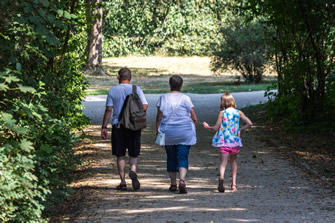The joint research project was executed by three research partners and two practitioner partners. Overall project coordination was conducted at the Leibniz Institute for Ecological Urban and Regional Development (IOER).
The scientific subprojects had the following topics:
- Urban biodiversity expertise: provisioning of knowledge base and monitoring concepts for practical implementation of German National Strategy on Biological Diversity (NBS) in communities (Institut Wohnen und Umwelt (IWU – Institut Wohnen und Umwelt)
- Planning approaches towards implementation of NBS at the community level (IOER)
- Knowledge transfer, communal strategies and taking ecosystem services into account (DUH – Deutsche Umwelthilfe)
Firstly, in the implementation-oriented subprojects of the cities of Bielefeld and Heidelberg, recent findings and the procedure towards establishing a biodiversity strategy had been tested citywide. Secondly, using two testing areas, exemplary concrete goals and measures of the communal biodiversity strategy – while still under development – had been implemented to demonstrate the practical suitability and the potentially obtainable goals. The three research partners had been in continual discourse with the practitioner partners, as well as with other stakeholders.
The definition of “community biodiversity strategies” in this project was quite broad. It ranged from explicit, independent concepts to goal formulation and its integration into or linking to existing concepts of the city and also to the implementation of individual building blocks and concrete approaches at the project level. Areas of focus had been:
a) development of strategies and concepts towards stabilisation, improvement, and/or enhancement of urban biodiversity.
b) development of approaches of dealing with goal conflicts between biodiversity development and other demands of use
c) strengthening cooperation among stakeholders
d) demonstrating appropriate instruments and financing options towards the implementation of biodiversity strategies.
The development of biodiversity strategies as well as the implementation of measures had been accompanied by an intensive public participation. The goal was to encourage the support for biological diversity, thereby integrating important stakeholders in the implementation. Based on experiences by the project partner cities and other cities from the coalition “Communities for Biodiversity”, guidelines had been derived to aid other cities in the development of community biodiversity strategies.

